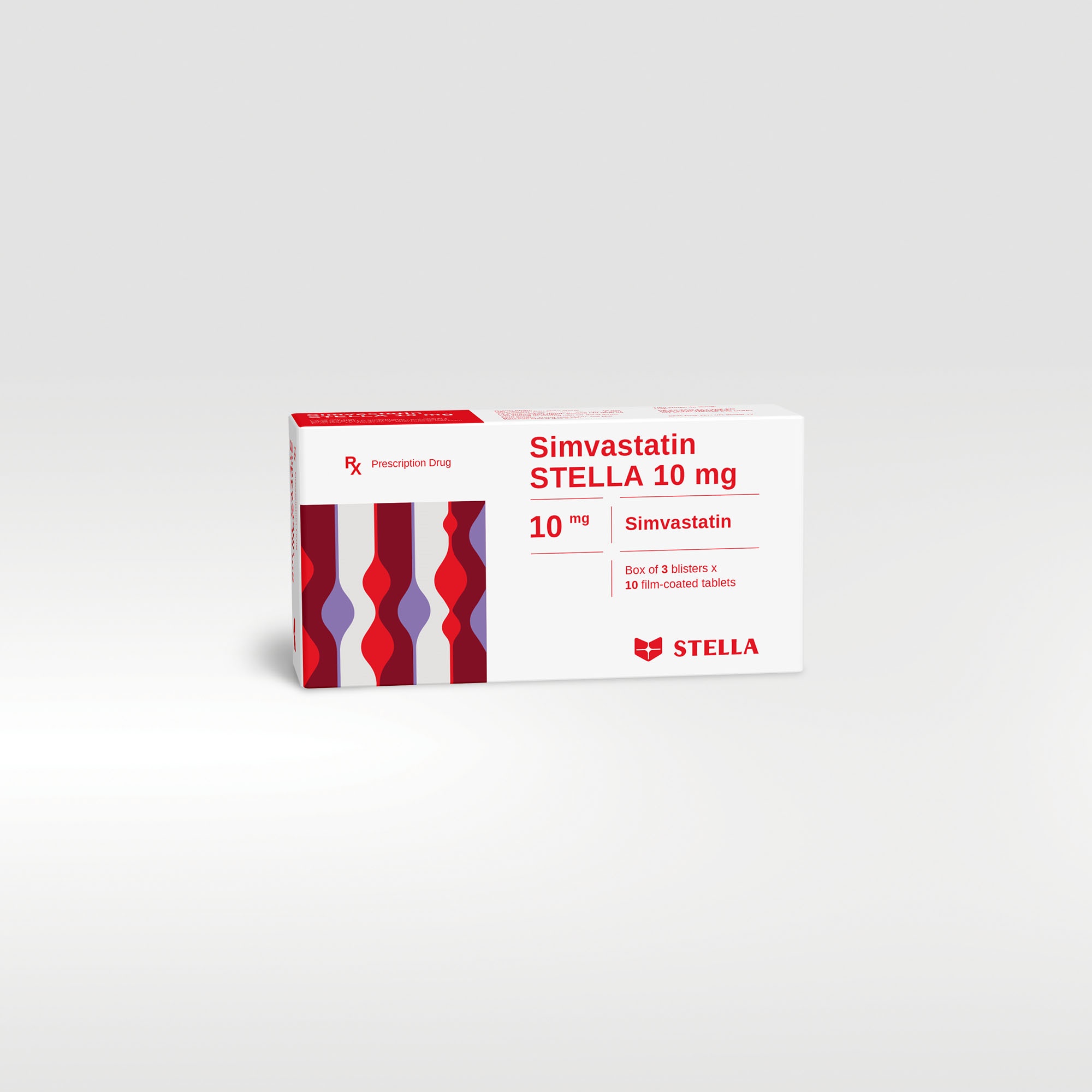Simvastatin STELLA 10 mg Rx
Simvastatin is a lipid-lowering agent that is derived synthetically from a fermentation product of Aspergillus terreus. After oral administration, simvastatin, which is an inactive lactone, is hydrolyzed to the corresponding active beta-hydroxyacid form. This is an inhibitor of 3-hydroxy-3-methylglutaryl-coenzyme A (HMG-CoA) reductase. This enzyme catalyzes the conversion of HMG-CoA to mevalonate, which is an early and rate-limiting step in the biosynthesis of cholesterol.
| Pack size | Box of 30 tablets, 100 tablets |
| Shelf-life | 24 months |
| Composition | Simvastatin |
| Dosage forms and strengths | Film-coated tablet: 10 mg |
Product code :













